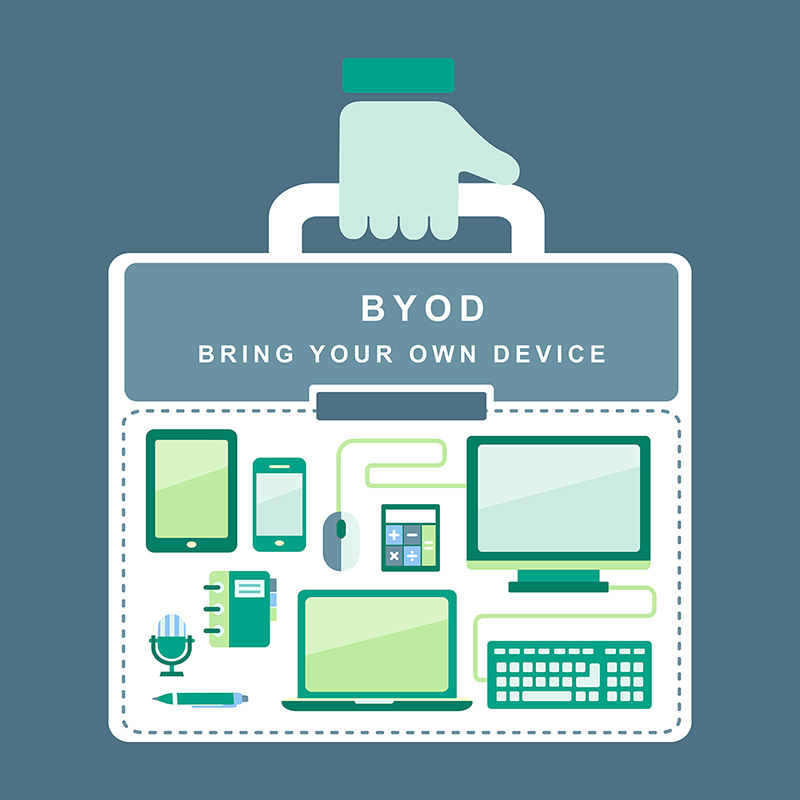Productive and satisfied employees can live inside BYOD containment

When employees started bringing their devices to work with the rise of the smartphone, companies in all industries feared what that would mean for productivity and security. Nowadays, personal devices in the workplace are a given -- so much so that Bring Your Own Device programs (BYOD) are being implemented across the enterprise at an increasing rate.
Unfortunately, those programs come at a price. Organizations that have attempted implement a BYOD program, however are largely failing as employees don’t want the company to control their entire device.
All employees have what we call a dual-persona, or the provisioning of two separate environments on one mobile device. For the professional persona, we are often using applications sanctioned by IT managers or within a containment application that claims to include all the work "must-haves". Priorities are around security and how well it integrates with existing, legacy software. The personal persona by contrast is not confined to a small percentage of applications or bundle sanctioned by an IT person. Instead, it’s about personal productivity. How can you message with your friends and family efficiently? How can you track your calendar so that it syncs with your husband or wife? How can you share images with your friends in the goofiest, but cheapest way?
This separation, although at first glance may assist with work-life balance, also presents a major problem. When the personal persona is all about ease of use and efficiency, and the professional persona is mandated to you, there can’t be cross-pollination. Instead, you end up navigating siloed applications, devices, and networks.
One way to address this misalignment is through a containment suite. Containerization creates a secure jurisdiction on a device while offering a workspace with applications and tools provided by the organization. This safeguards and separates sensitive enterprise data from the rest. Traditionally consumers and often businesses falsely assume that containment does just that -- contain an employee to specific functions and processes inside a typically outdated and slow-performing corporate application. That is not always the case. Additionally, application wrapping, or the process of applying a management layer to a mobile application without requiring any changes to the underlying application -- although selectively secure - only offers a partial solution to an overall device management program. Need to also state that app wrapping requires IT to define security policies per application… a tedious task.
It is time to update containment programs for the modern, multi-tasking, telecommuting and flexible employee. According to the Boston Technology Lab, 40 percent of employees at large enterprises use their personal devices for work. This comes at a simultaneous time when containerization is an emerging class of management tools since employees may not be willing to give up control of their smartphones in exchange for receiving access to corporate apps and data. Not that I can blame them!
So what should the future-of-containment application look like? Here are a few characteristics:
- Technology solutions must satisfy both the employee’s and company’s needs. Many employees don’t open their containment applications after the first use since it can sometimes be more of a burden.
- The application must create an easy user experience that affords the blending of the dual personas; allowing an increase in user retention rates.
- It should be fast. Fast enough to seamlessly blend the most utilized experiences from an employee's personal persona -- such as converging chat and email capabilities.
- Lastly, working remotely or navigating work in and out of the physical office should be seamless. By simply studying an employee's personal device use including how and when they click content; read information; and integrate the use of multiple applications.
Containers are good for creating a secure environment, but they are only useful to end users if they include baseline apps such as email, calendar, contacts, notes and browsing, but they should also find a way to integrate the plethora of creative communication and productivity technologies. The future workforce will not blink twice while using a personal device for work, but much of their current concerns over satisfaction, private data, and second-hand natured user experience will still come into play. We need to provide them with tools that create a seamless experience across personal and professional channels.
Photo Credit: totallyPic.com/ Shutterstock
Jay Chitnis is Head of Marketing, Synchronoss’ Enterprise Business Unit.